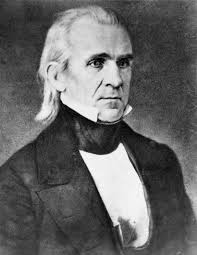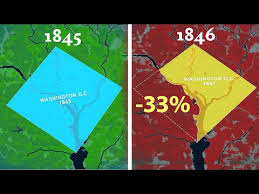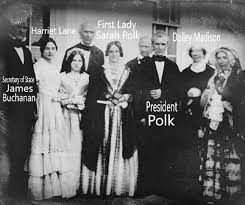Posts Tagged ‘walk’
Take a Quick Trip with Me Through 1840’s Washington City and the Erie Canal. I’ll Drive.
I (along with thousands of others) have enjoyed a satisfying career working very indirectly for many Presidents in the Executive Branch of government while employed by the DOT (Department of Transportation) in the FAA (Federal Aviation Administration) as an ATC (Air Traffic Controller). It was during this period of my life I developed my passion for acronyms.
If you climbed my governmental employment tree and followed the Executive Branch out far enough, you’d eventually find me – a little leafy twig way out on the FAA limb. And although far-removed from the corridors of power, at one time this federal position placed me 198,744th in the line of succession for the office of the Presidency – not so many people standing between myself and the office as to mathematically eliminate all hope of reaching it, but far too many people to consider any kind of mass liquidation of those obstacles blocking my path to the Presidency.
So I soldiered on in my profession as an air traffic controller in the slim hope that Avian Flu might miraculously strike down all who would deny me my rightful spot as the Chosen One in becoming your Commander-in-Chief. Alas it was not to be. I retired in 2013 a little closer to my goal (196,321st in line), but still a Spokane, WA away from the Oval Office. I can only express my disappointment in words unspokane.
Newsflash – Mystery of Life Remains Unsolved
Who knows why one develops an intense appreciation for something that’s not an inbred physical need (e.g., food, sex, shelter), but rather something that’s created by man (e.g., art, NASCAR, or in my case Presidents). I’ve always wondered why I’m so mightily and unaccountably drawn to our Presidents; particularly the pre-Civil War presidents and specifically our 11th President James Knox Polk (1845-1849). My preternatural affinity for the man supernova’ed with the chance opening of the book Atlas of the Presidents at Syracuse’s Paine Branch Library in 1965, when, at the age of 4, I serendipitously opened to the indelible image of President Polk burning its eerily familiar countenance into my psyche and eliciting an otherworldly feeling of recognition – “I know that guy.” I’ve never been able to explain or understand this connection. I think The Monkees expressed it best when they sang the Neil Diamond penned song I’m a Believer:
Then I saw his face
Now I’m a believer
Not a trace
No doubt in my mind
I might speculate that in a past life I was James Knox Polk, but more likely I was his horse groomer or his Postmaster General and Nashville crony Cave Johnson. Despite my intense interest in the Beatles I know I couldn’t have been one of them in a past life because we existed simultaneously, but with Polk there was at least a mathematical possibility.
When imagining the early years of our republic I’m free to happily speculate (fantasize) on the historical personage I may have been and what role I may or may not have played in shaping our raw nation. While these kinds of fantasies put others to sleep, they keep me up at night. This may account for my fascination with a time period most people simply regard as “Are you kidding me? – no indoor plumbing.” Potty breaks aside, I’d thrill to sit down to a Presidential state dinner in the time of James K. Polk’s mentor Andrew Jackson (1829-1937) and break bread with John Quincy Adams, Henry Clay, Daniel Webster, John Calhoun, Dolley Madison and Martha Stewart (It’s my fantasy so Martha is coming with us to help with the food and decorations. And that’s a good thing).
I’m desperate to convey more to you than just a heartfelt description of a time that calls to me. I don’t want these words to just lie on the page as 2-dimensional symbols of the rich universe I dimensionalize when conjuring up this vital and vibrant time period. I want you to feel the same mystic chords of attraction pulsing through your being that I experience in ruminating over this pivotal era and its stout people. I’d like the same pleasure coursing through me to stimulate you when I project myself into the lives of these intrepid men and women who pledged their “lives their fortunes and their sacred honor” to one another as they did at the end of the Declaration of Independence.
Fast forward (backwards?) to the 1840s and witness an awesome epoch fraught with conflict and rife with accomplishment. Without these struggles and achievements our nation might have perished from the face of the earth. I’ve read the history and if I were to be granted a 7-day, 8-night excursion to visit “the time before plumbing” I’d know exactly where to go and what to expect. More importantly, I’d be honored to take you with me and act as your personal tour guide. And while our mini-tour package goes well beyond the scope of a short essay, let’s take the journey anyway – just the two of us. Reviewers will say this intrusion or digression lends itself to choppiness or “too many notes.” You and I know better. Art imitating life. Let’s go! We can always return later to modernity should we need a proper shower or a Costco rotisserie chicken.
The Road Less Traveled. Alright, the Road Never Traveled, but Let’s Go there Anyway
Journey with me to 1840s Washington DC or as it was known then: Washington City. At that time our nation’s capital also comprised a chunk of land on the Virginia side until that unused portion was retroceded back to her in 1846. You want detail? That’s detail.
Originally the District of Columbia (the site for our new nation’s capitol) was a 10-mile tipped square courtesy of land ceded by Maryland & Virginia. When all the development seemed slated for the Maryland portion, Virginia reacquired (retroceded) their parcel.
We live just north of the White House on historic Lafayette Square, which at the time is a 20-year-old ungainly and deforested field with a few trees and muddy walkways in it. We light candles, empty chamber pots and spittoons and tend to our horses and precious firewood. There are no strung wires anywhere except for one…hmmm.
We revile the pungent aromas of the unwashed which, at this time, is pretty much everybody and everything. We are buoyed by the elevated discussions of Manifest Destiny and we despair at the bellicose sectional rhetoric surrounding involuntary servitude (slavery). Perhaps we take a steamship to New York and travel the 363-mile Erie Canal like Revolutionary War hero Marquis de Lafayette did in 1824 on his farewell tour. We glide through the storied, pastoral settings of America’s first novelists – James Fennimore Cooper (The Last of the Mohicans & The Leather Stocking Tales) and Washington Irving (The Legend of Sleepy Hollow & Rip Van Winkle). While plying the commercial waters of this vital artery, we witness the blooming of the Empire State and the resultant flourishing of New York City as our financial capital. We pause to realize that shipping a barrel of flour from the Midwest was reduced from $10 to just $1 with the advent of the canal thereby greasing the wheels of commerce and producing economies of scale for everyone. In this case a rising tide truly did lift all boats.
A few decades after the Erie Canal was completed we watch as a spider web of railroad tracks (the iron horse) infiltrate the countryside, literally connecting the dots and making it the first worldwide web. We’re bewildered by the invention of photography and the development of the telegraph – and this is just the 1840s folks! You think it’s exciting to be alive now; try transitioning from foot and wind power to mechanized steam power (ships, railroads and the Industrial Revolution). In this watershed moment, we transition from news traveling at the speed of hooves to messages sent at the speed of light (the telegraph). Oh, that’s what that wire was for. For the first time in history we are now able to demystify so many illusions and so much misinformation from afar by virtue of the daguerreotypist’s unerring lens.
All aboard. Time to take the train to Washington City (OMG. No rutted roads or jarring carriages). It’s time for dinner at the White House (then called the President’s House). We check in at Stephen Decatur’s boarding house, put on our best suit of clothes and walk by St. John’s Cathedral as we make our way through, muddy unlit Lafayette Square (gas lighting in 1848). Alighting onto the north portico of the President’s House, we hand our dinner invitation card to the steward Henry Bowman who sleeps and conducts all his business from the tiny porter’s lodge adjacent the entryway. We then cross the transverse hall and enter the oval Blue Room for drinks and mingling before conducting ourselves into the candlelit state dining room.
On this visit to a James Know Polk’s 1847 White House for a diplomatic corps dinner (foreign ambassadors in attendance in full formal regalia) we feast on Canvasback duck, terrapins, bear and partridge. OK, I’ll grant you others might feast on these dishes, but you and I would probably pick at these gamey entrees (that’s why we’re bringing Martha Stewart). After the dinner and the several toasts, there are cigars, Madeira and light cakes. With all the chandeliers ablaze, guests meander into the Red Room to share a snippet of conversation with then Secretary of State and future President James Buchanan. In no time we realize he’s a confirmed bachelor. A very confirmed bachelor and as publicly gay as one dare be in the days before Stonewall. A gay man in those days was referred to as an “Aunt Nancy” – amongst other epithets.
We press on to the crowded and creaky oval Blue Room which venerable Senator Daniel Webster humorously suggests “is standing only by force of habit.” Onward through the Green Room where we pretend to hold a conversation with British Ambassador Sir Richard Packenham. He’s so stuffily aristocratic that even though we speak the same language we don’t understand a word he’s saying. We nod our heads and make our way into the Transverse Hallway (the long red carpeted hallway you see behind the President during a press conference) and on into the East Room where the swinging Marine Corps Band is playing popular dirges of the day. There’s no electricity, no plumbing, no recorded music or much hygiene for that matter (Martha will bring Wet Naps). Life was tougher, crueler and perhaps lived more appreciatively as a result. Nutritious, wholesome food was not always available especially since refrigeration was then known as salting (I’m bringing Trail Mix). My heart swells as I’m allowed to both participate in and bear witness to the colorful parade of history passing before us. My enthusiasm is infectious and now you’ve got the bug and ask if we can extend our stay.
Our excitement is incalculable the next day when we visit the Capitol in 1847 and wave to a lanky 38-year-old Whig congressman from Illinois as he denounces the Mexican War in the House of Representatives. That man is Abraham Lincoln. John Quincy Adams then known as “Old Man Eloquent” looks on approvingly then rises to rail against slavery. If they were alive today, they’d both be on MSNBC a lot. On the senate side South Carolina firebrand John C. Calhoun will brook none of this scolding Yankee abolitionist censure heaped on the “peculiar institution” so fundamental to the Southern way of life, “If we were to free these poor souls where would they go? Nay, our plantation slave system is a form of benevolent paternalism and should be allowed to spread throughout the new territories.” He’d be on FOX News a lot.
When you and I are through listening from the galleries we’d have our carriage sent for and then rumpety-rump our way back down the Capital Hill along the 1.3 miles of Pennsylvania Avenue to our Lafayette Square (so named after the Marquis) boarding house where I hope the fireplace still has some glowing embers in it for starting a roaring blaze. We don’t want our water pitcher to freeze over again like they do almost every winter night.
Dolley Madison Stops in for Dinner
We settle in for an evening of card playing and roast lamb which we share generously with the elderly and still vivacious Dolley Madison who has moved back to the capital in late 1830’s following the death of husband and former President James “Father of the Constitution” Madison. Dolley is such an enduring figure in our nation’s history that she is reverently referred to as Washington’s other monument. Dolley’s profligate son John Payne Todd from a first marriage has saddled her with considerable debt (gambling) and it’s only fitting that we assist the Nation’s first First Lady by sharing our good fortune with her.
The next day we accompany Mrs. Madison to St. John’s Episcopal Church where she and her husband first worshipped at in 1816 when the cathedral was completed. President Polk and his wife Sarah Childress Polk are also in attendance and after services, we all stroll back to the nearby White House for a visit. First Lady Sarah has befriended the venerated Dolley and has used her as a resource for entertaining and social advice. There we partake of some refreshment (tea and cakes) and enjoy the southern hospitality while being served by Polk’s personal slaves he brought with him from Tennessee to cut costs.
This is likely a Sunday afternoon, post-church daguerreotype of then Secretary of State and future 15th President James Buchanan (on left), his niece Harriet Lane, First Lady Sarah Childress Polk and our 11th President James Knox Polk (in center) and former First Lady and revered national matriarch Dolley Madison (2nd from left – she moved during the long exposure time). They are all dressed in their Sunday finery or possibly before a state dinner or diplomatic reception.
Dolley’s first husband succumbed to the Yellow Fever epidemic of Philadelphia in 1793. That’s where the Nation’s Capital was at the time and where Aaron Burr (the bastard who shot Alexander Hamilton) introduced her to Congressman James Madison whom she married in 1794.
One can only imagine the spritely conversation these luminaries engaged in that afternoon. I know I do. In recognition that past is prologue, I believe the way they respectfully conducted themselves, informs the manner of public discourse today – at least I hope it does.
Well, our journey has come to a close. It’s almost the 1850’s and time for Henry Clay’s Missouri Compromise, which staved off the “irrepressible conflict (the Civil War) for a decade.
Epilogue
I regularly project myself back into this romantic period. The mystical bands of attraction hold me close to that era and an examination of that attraction is altogether fitting and proper. And even though I am over the moon for this era in our nation’s history, I would only visit if I had return rights to this era because despite my ardent sentiments; you can’t flush a chamber pot. Thanks for tagging along. You have been a boon travel companion.




